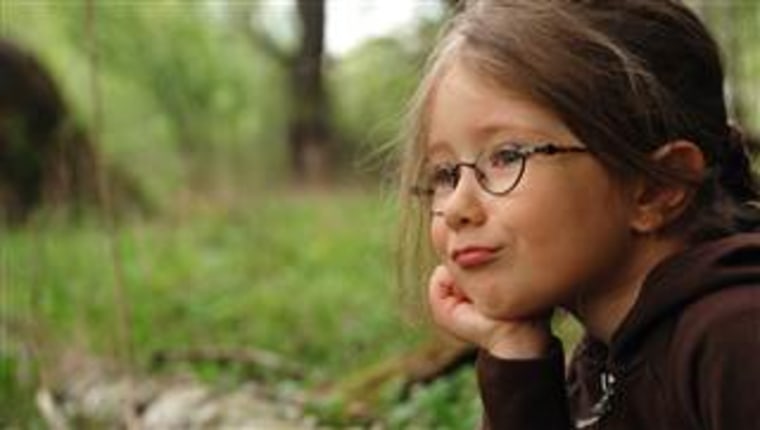
Researchers think they’ve come up with a simple formula for predicting which children will need glasses as they hit middle school: measure how farsighted they are in the first grade.
Their study of more than 4,500 children shows that measuring their vision at around age 6 can predict which kids will become nearsighted by the age of 13.
The findings, published in the Journal of the American Medical Association’s JAMA Ophthalmology, also adds one more argument against the widely held belief that reading in poor light or “near work” somehow causes myopia. And it provides a potential window to try to help prevent development of nearsightedness in vulnerable kids.
“Near work has been thought to be a cause of myopia, or at least a risk factor, for more than 100 years. Some of the studies that led to that conclusion are hard to refute,” said Karla Zadnik, dean of the College of Optometry at The Ohio State University, who led the study team.
“In this large dataset from an ethnically representative sample of children, we found no association.”
One thing that other researchers had found, again and again, was that children tend to be slightly farsighted in first grade, and that kids who are less farsighted at this age tend to become myopic later.
The kids in Zadnik’s study have been taking part in a large, real-time study of children in five cities that started in 1989. They got regular eye exams starting in first grade and going until the end of eighth grade, when they turned 13. Only children with normal vision at the start were included.
“A total of 414 children became myopic from grades 2 through 8,” Zadnik’s team wrote.
Going back through their annual eye exams, the researchers found that those who were less farsighted — the cutoff was +0.75 diopters — were more likely to become nearsighted when they were older. Myopia was defined as -0.75 diopters or worse.
“Future myopia can be predicted in a nonmyopic child using a simple, single measure of refractive error,” they concluded.
Children rarely get a comprehensive eye screening when they are so young — it’s usually something more general in a pediatrician’s office. But it may be worth doing more often so ophthalmologists can work to see if there is a way to prevent eyesight from worsening.
Several recent studies have shown that, for instance, kids who spend more time outdoors in sunlight are less likely to develop myopia.
And it’s a significant issue, the researchers point out. “Myopia affects one in three individuals in the United States aged 12 to 54 years, and its prevalence appears to be on the rise,” they wrote.
“Its management costs the U.S. health care system almost $4 billion annually.”
This article was originally published Apr. 2, 2015 at 1:53 p.m. ET.